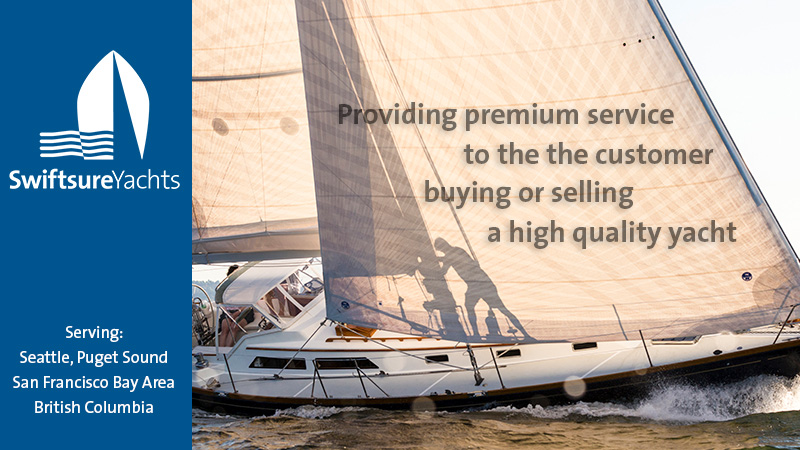
‘Maxi Edmond de Rothschild’ Begins Jules Vernes Trophy Attempt
Updated 12:30 p.m. Monday, Feb 13:
Just as we hit publish on this story we learned that the Maxi Edmond de Rothschild has abandoned its attempt to capture the Jules Verne Trophy due to engine damage. The website report stated: “Leaving Ouessant this Sunday at the start of the afternoon for a new attempt at the Jules Verne Trophy, the round the world sailing record, the crew of the Maxi Edmond de Rothschild announces this evening to turn around and return to their home port in Lorient to repair damage to an element of its generator (engine).”
“Faced with this atypical technical problem, which they can in no way solve at sea, Charles Caudrelier, Franck Cammas and their four crew unfortunately have no choice but to stop their attempt to return to Lorient as quickly as possible. The objective is now to repair in order to be able to wait for a favorable weather window as soon as possible. As a reminder, Gitana Team had announced a stand-by until the end of February, beginning of March, which hopefully still leaves great opportunities.”
———————————————————————–
A new attempt to break the current record for the Jules Verne Trophy got underway on Sunday when the Maxi Edmond de Rothschild crossed the start line off the island of Ushant, at 13h 9min 30s UTC. The current record is 40 days 23 hours and 30 minutes, set in 2017 by Francis Joyon and the men of IDEC. To beat the record they will have to make it back to Brest and the Créac’h Lighthouse before March 25, 2023, at 12h 38min 59s UTC.
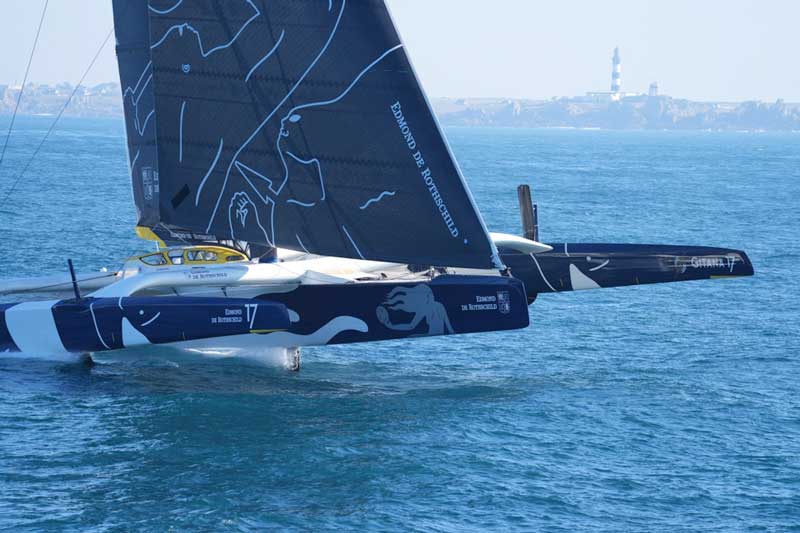
Maxi Edmond de Rothschild demonstrated her winning abilities when she won November’s Route du Rhum race from France to Guadeloupe.
To win the Jules Verne Trophy, clock the fastest circumnavigation time by any type of yacht with no restrictions on the size of the crew, and choose whenever you want to start. The entire voyage must be accomplished exclusively by the natural forces of the wind and the crew. And, the route must entail keeping the capes of Good Hope, Leeuwin and Horn to port.
The original record was set in 1993, when Bruno Peyron set up aboard the Explorer catamaran to attempt to sail around the world in less than 80 days. This was a mark set by the character Phileas Fogg in the Jules Verne novel Around the World in 80 Days. Explorer’s initial time just barely beat that 80-day mark in their first attempt, finishing in 79 days 6 hours 15 minutes 56 seconds. Now, 30 years later, the time has dropped almost 40 days and is considerably harder to beat. You can follow the attempt on the Gitana Team Tracker here.
Well, We Got That Wrong! What Was That Boat, Really?
In the February issue of Latitude 38, we shared several letters from readers in response to a ‘Lectronic story from last December, “A Question About Spinnakers, Symmetry and Ratings.” In the printing of the letters in the February issue, we attributed the wrong boat type to a certain reader. The question had been raised by Jim Morgan, who races his Oceanside-based Ericson 35 MkIII Green Flash. He wrote, “I have an Ericson 35 MkIII that is raced with a bow-tacked asymmetric kite. The rating PHRF (in SoCal) assigns is based on a poled-out symmetrical kite, which offers a significant advantage on deep downwind runs, particularly windward/leewards.
“They either do not understand, or just don’t care, about the difference. (And they question why their membership is on a death spiral!)
“The sailmakers (Ullman, Quantum, etc.) tell me there should be a correction due to the inability to square back the kite. Have you guys ever covered this topic? Max Ebb?”
We invited our readers to respond, and many did. But in the process of transferring their replies to the printed pages of the magazine, we messed up. We wrote that Jeffry Matzdorff’s Between The Sheets is a Hallberg-Rassy 62. That is incorrect; she is actually a Jeanneau 52.2. Sorry, Jeffry, and thanks for setting us straight and for sending the photo below.
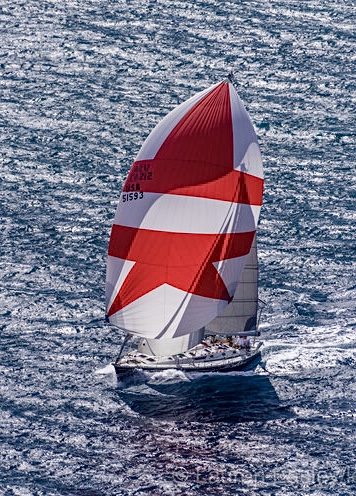
Jeffry’s response to the spinnaker question was, “Ditto on the pole. Fly the asymmetrical off a conventional pole, with the outboard end of the pole down and forward when reaching, then take the outboard end of the pole up and back to your shrouds for deeper sailing. Lots of people are doing that. I was involved with racing and delivering a Jeanneau 52.2 out of Marina del Rey, and she won her class in the ’03, ’05 and ’07 Transpacs. Between The Sheets was a very early adopter of flying an asymmetrical this way, if you didn’t have a sprit. They won double-digit Mexico races with the same setup, and every race was a podium finish with no hit on their rating. All Santa Cruz 70s fly asymmetricals off conventional poles. (There is a certain Andrews 68 that’s being optimized, and they are putting a TP 52 sprit on her for Transpac.)”
We received other responses to the question from readers including Jay Sorensen of Infinity, a Sydney 41 out of San Diego; Pat Shoemaker, who is the spin trimmer aboard the Cal 40 No Parlay; and Jib Martens of the Worth 40 Freedom out of San Francisco.
Jib also sent along a photo of Freedom flying her symmetrical spinnaker during the Half Moon Bay Race.
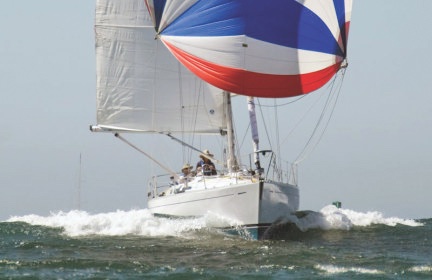
You can read all the comments regarding “A Question About Spinnakers, Symmetry and Ratings” starting on page 30, in February’s Letters at Latitude38.com.
Quality Yachts With Premium Service From Swiftsure Yachts
Swiftsure Yachts offers exceptional service, quality brokerage boats and new yachts for world cruising. Visit our website swiftsureyachts.com.
‘La Diana’ — An Almost 40-Year Love Affair
In this month’s issue of Latitude 38, local sailor Fred Huffman shares the story of his love affair with his Contessa 35, La Diana.
In 1974, Marina del Rey yachtsman Paul Berger purchased a Contessa 35 sailboat from Jeremy Rogers, the renowned builder of fine sailing yachts in England. The boat was shipped to MdR and Paul proceeded to actively race his new boat, Decision, in race venues all over Southern California, with winning results everywhere. During the years Paul owned Decision, he maintained her in yacht condition, and he continually made enhancements to make his boat sail faster and better. Paul’s good friend, the notable Bay Area designer Carl Schumacher, re-shaped and added depth to the keel. Paul had Seatek, the fine Southern California mast builder, build a new, bendy three-spreader mast, one and a half feet taller, to replace the original mast, which was, as was normal on boats in those days, stiff as a wharf’s piling.
In the mid-1980s, Paul commissioned the construction of a new Schumacher-designed 50-ft fast cruising boat. He then approached me about procuring his Decision, which I had long admired.
In 1986, my wife Diane and I purchased Decision, replacing our wonderful Yankee 30 — also La Diana — that for 12 years we had happily cruised and raced with great success (usually with our two boys aboard) everywhere in Southern California. Our family cruised that La Diana up to the Bay and into the Delta. By 1986 our two little boys, Brendan and Dana, had grown into much bigger guys, so we were ready to move up to a larger boat.
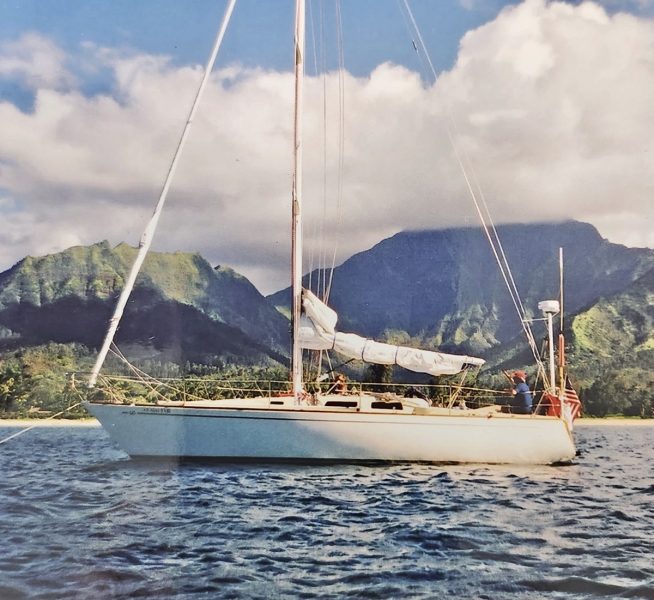
We’ve now owned La Diana for more than 35 years, and I’ve come to admire and love her more year by year. I’m constantly impressed by her high-quality construction, her sailing performance, her beautiful lines, and, well, everything about the boat. Also, over the years I’ve had the huge pleasure of implementing numerous innovations and enhancements to the fine vessel — so-called “Huffmanizing.”
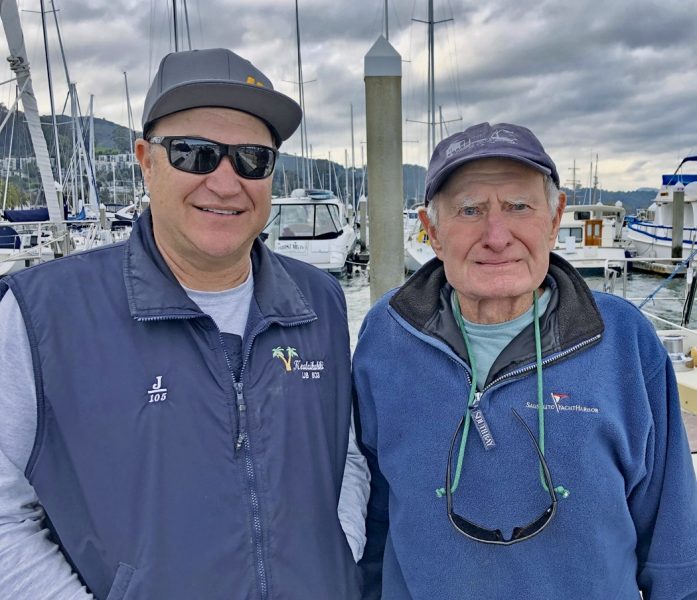
During the early 1970s, in the US and worldwide, a type of sailboat racing called “level racing” was immensely popular among boats called “one-tonners.” It was termed “level” racing because, although all the boats racing in the various regattas were not identical (or, they rarely were), they were all of similar size — 35- to 39-ft long — and they raced one another on a “boat-for-boat” basis; i.e., there was no handicap system of time allowances, so the racers were ranked according to their actual place of finish in the fleet. In the early 1970s, in all of Southern California’s racing venues, one-ton level racing was highly popular, very active, and very competitive, and it attracted the highest caliber of racing sailors.
Read more in the February issue at Latitude 38.com.
Thrilling Cape Town Conclusion to The Ocean Race, Leg 2
The second leg of the new-look The Ocean Race has come to a thrilling conclusion in Cape Town, South Africa. With the fleet of five foiling IMOCA 60s departing the Cape Verde Islands on January 25, and sailing 4,600 miles down the Atlantic to South Africa, the top three boats were separated by less than half an hour after nearly 18 days of racing. Any concerns that the transition to foiling IMOCA 60s would create less close racing than the one-design Volvo 65s that they replaced has been quelled as the small but very deep fleet battled for position and sailed within sight of one another, virtually all the way to the finish. Kevin Escoffier and Team Holcim PRB made it two for two in this edition of the race by pipping a resurgent Paul Meilhat-led Biotherm team that finished just 16 minutes astern of the leaders. The American 11th Hour Racing team led by Charlie Enright slipped to third place at the finish, another nine minutes astern of Biotherm.
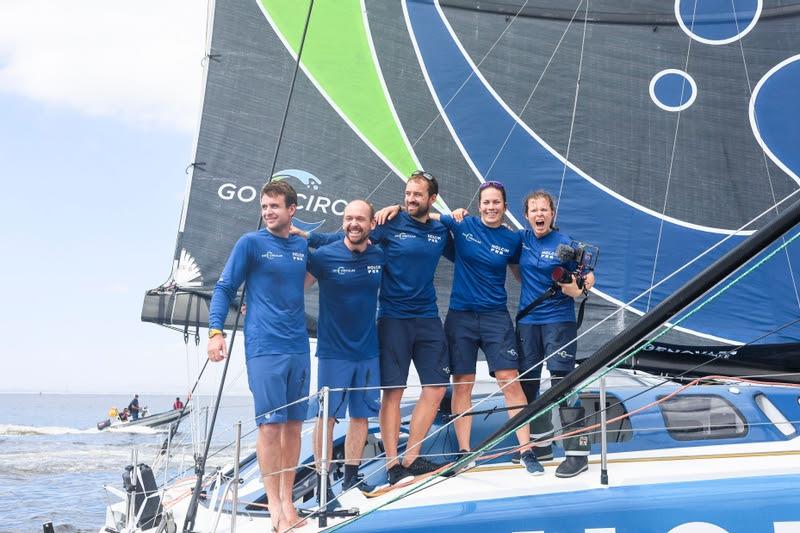
Departing the Cape Verde Islands in relatively light air, the fleet jibed their way down the northeast trades toward the equator before GUYOT environnement – Team Europe cut the corner on the four leaders and appeared to move into the lead while crossing the doldrums. As the fleet negotiated more light air in the Southern Hemisphere, GUYOT encountered light winds, while the four new-generation boats that were positioned farther to the west picked up better breeze and romped along south to establish a pecking order that has more or less been present since the race start in Alicante, a month ago.
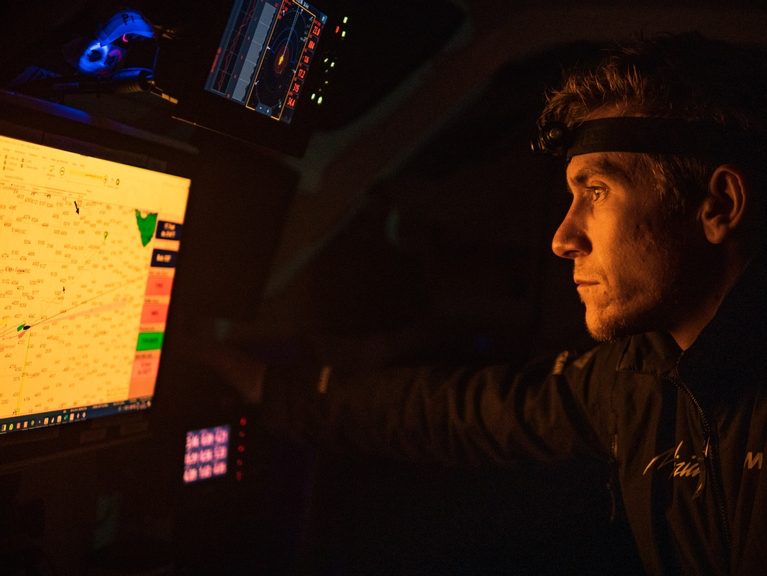
Hooking into the strong westerlies of the Southern Ocean, the fleet of five foiling IMOCAs put up some huge numbers en route to Cape Town before abruptly slamming into a light-air transition zone. Again, reshuffling the fleet and effectively creating another re-start just before the finish, the top three boats sailed within sight of one another, while Team Malizia tried a hero-or-zero move down south, which didn’t quite pan out. Team Malizia finished fourth with GUYOT environnement – Team Europe again in fifth.
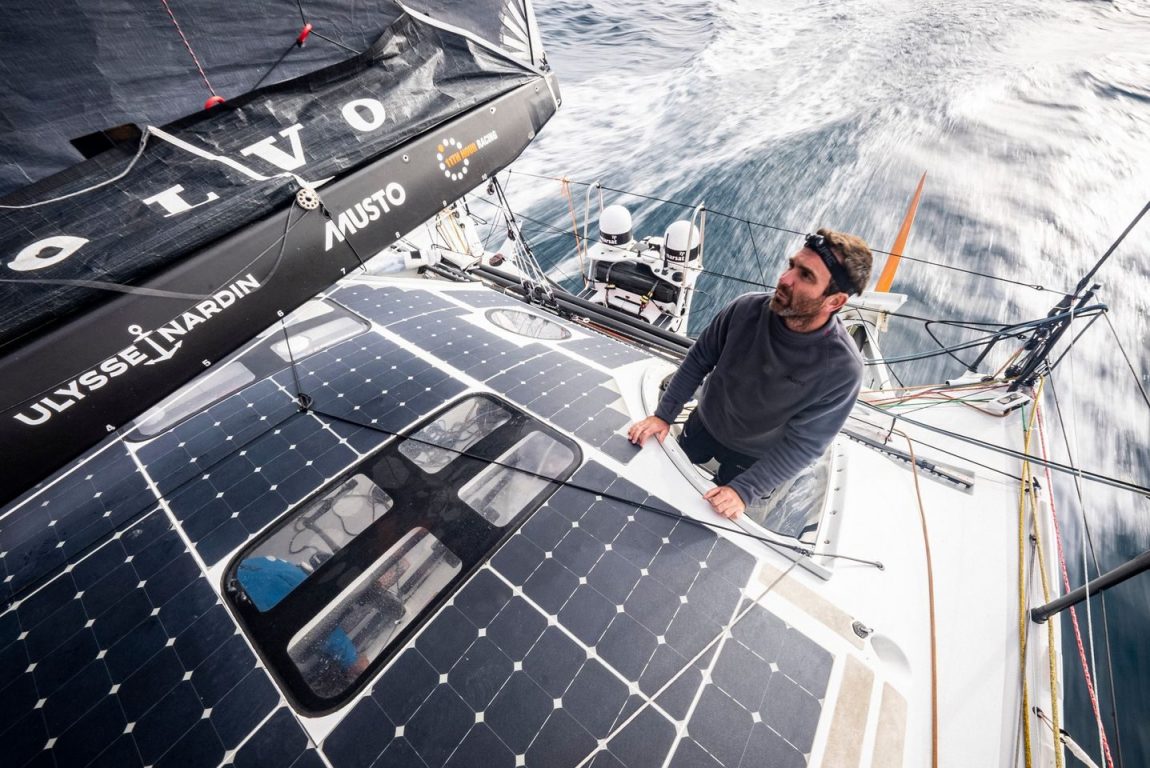
Biotherm made an impressive comeback and showed great light-air speed, which allowed them to slip by 11th Hour Racing and challenge Holcim PRB all the way to the finish.
“Biotherm had a huge night last night but for us [on Holcim PRB], we knew we had to find the leeward (northern position) before the Cape Town coast,” skipper Kevin Escoffier said. “We did a lot of sail changes and work to get this position. It took until about 40 miles from the finish line to get where we wanted to be and hold it to the end.”
11th Hour Racing sailed a phenomenal race and battled hard for the lead the entire time, which has to make third place sting a little bit, after Biotherm’s slick light-air speed and routing. “We are a little disappointed with a third place after 17 days, but the bigger picture to take home is that we sailed the boat fast and well, and I think that bodes well for the future. This race is a marathon and not a sprint, and we have a big double-pointer coming up with Leg 3 through the Southern Ocean,” said 11th Hour Racing‘s skipper, Charlie Enright.
Now in Cape Town, South Africa, until February 26, the fleet will be preparing for a monster leg to Itajai, Brazil, that will take them 12,750 miles through the entirety of the Southern Ocean in one long leg. As referenced by Charlie Enright above, this will be a double-points leg that could drastically shake up the scoreboard, which now sees Holcim-PRB open up a three point lead over 11th Hour Racing with Biotherm a further point behind, in third.
Classy Classifieds March Issue Deadline Is February 15
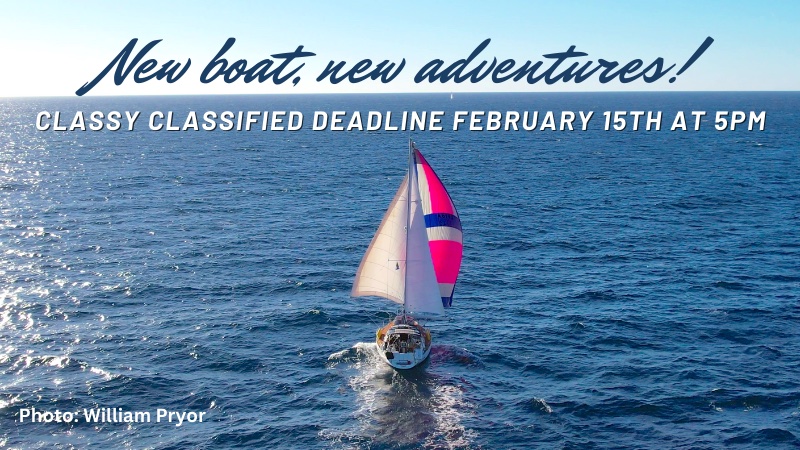
Need to sell your boat or just clear out some gear? Wednesday’s the last day to get your Classy Classified ad into the March issue of Latitude 38. Place your ad today.

